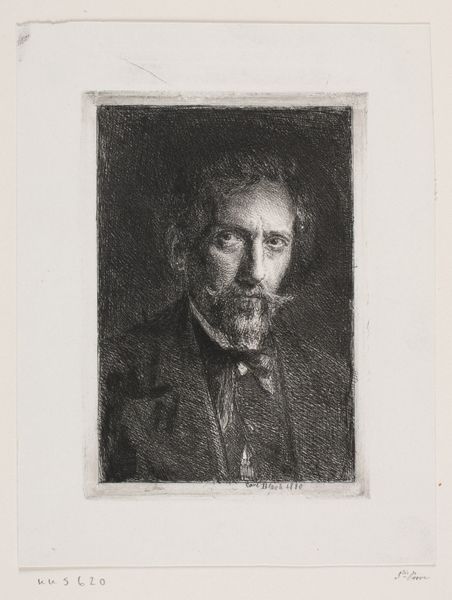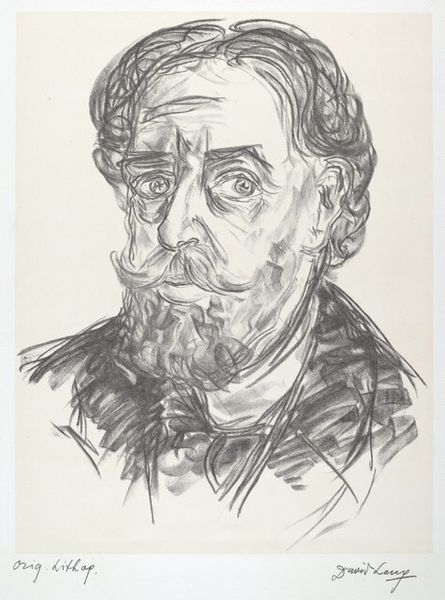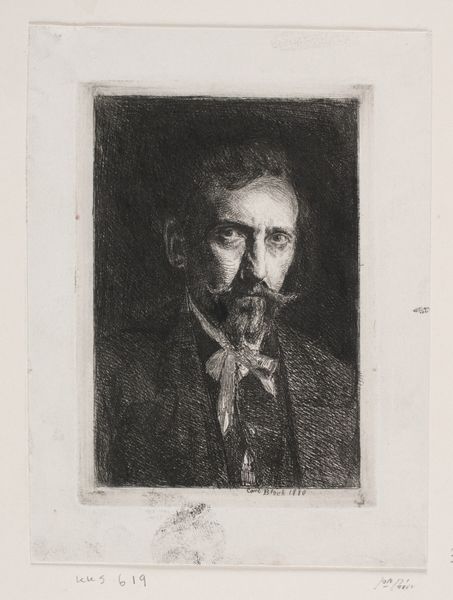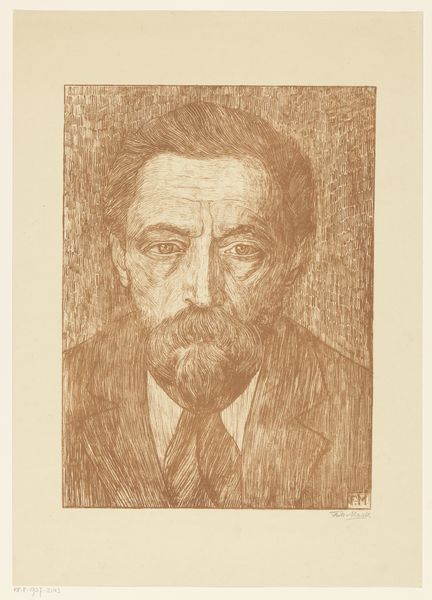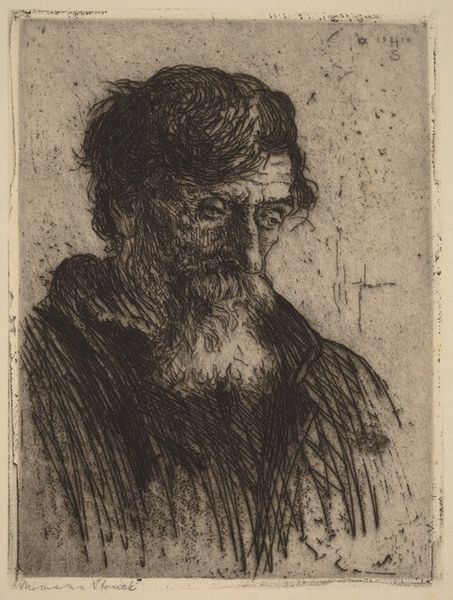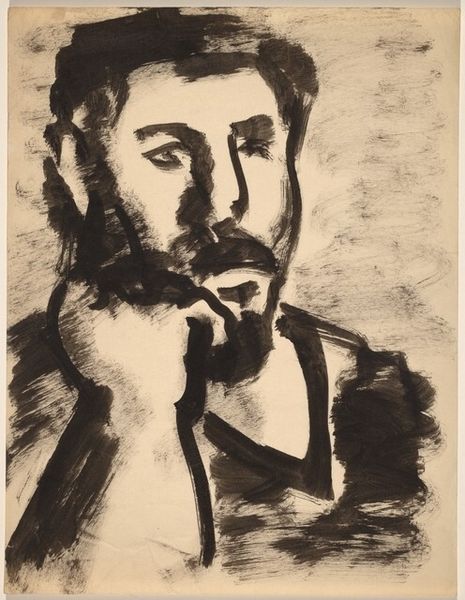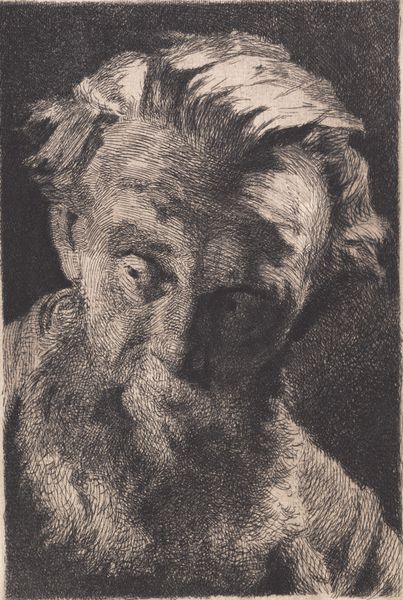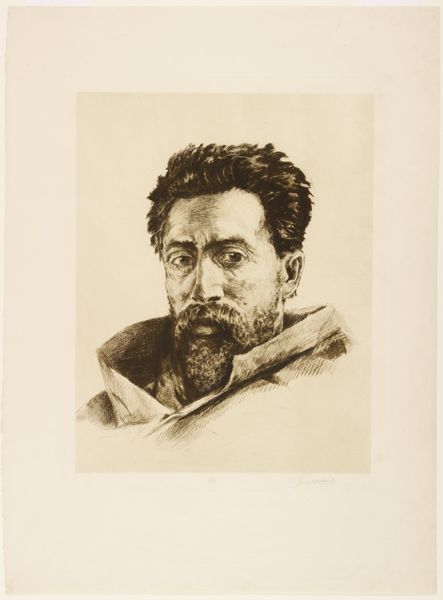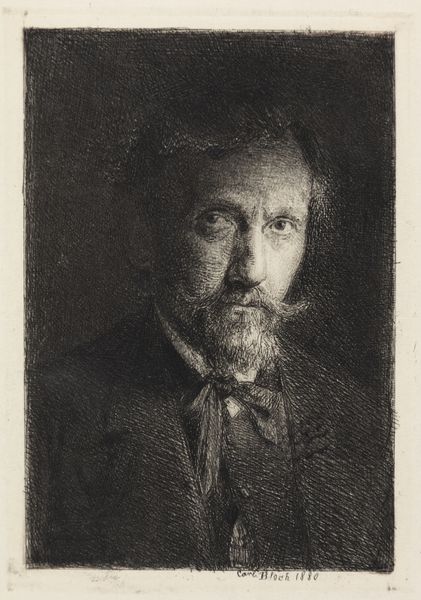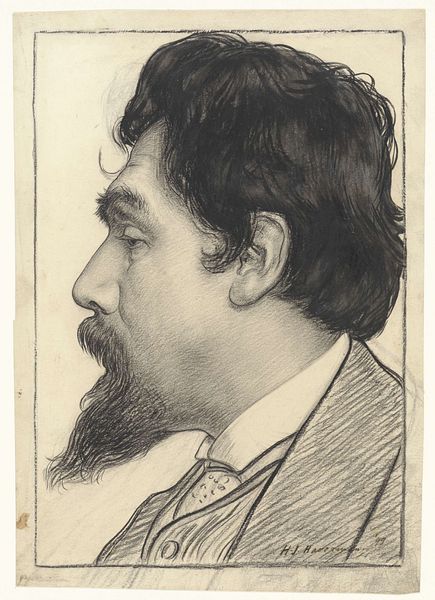
drawing, print, pencil, graphite
#
portrait
#
pencil drawn
#
drawing
# print
#
pencil sketch
#
charcoal drawing
#
pencil drawing
#
pencil
#
graphite
#
portrait drawing
#
academic-art
#
monochrome
Copyright: National Gallery of Art: CC0 1.0
Curator: Welcome. Before us, we have “Spira” by Heinrich Wolff, rendered with pencil and graphite, showcasing the artist's proficiency in monochrome portraiture. Editor: Woah, this fella looks lost in thought! The shading gives him such a pensive air, like he's carrying the weight of the world, or at least a very dense novel, on his shoulders. It's wonderfully melancholy. Curator: Indeed, the composition directs the viewer's eye to the face and hands. Note the subtle use of chiaroscuro to define form and evoke emotional depth through tonal contrast. It adheres quite closely to academic principles of representation. Editor: You know, it feels very intimate. Like you’ve just caught him at a private moment of reflection. There's an unresolved narrative here, a question lingering in the air. Is he contemplating success? Regret? Or perhaps just what to have for dinner! Curator: His expression is carefully constructed to be ambiguous, inviting multiple interpretations. And structurally, one must observe the lines that delineate the subject from the dark field of the backdrop, a technique Wolff uses to maintain figural integrity within a relatively limited range of values. Editor: But that background isn't just neutral; it seethes, like dark smoke. I love the looseness around the edges, gives it a kind of unearthly quality. Is he real? A memory? A figment? It dances on the edge of reality, which makes it super engaging for the eye. Curator: Wolff’s work, while drawing upon traditional portraiture, demonstrates a keen understanding of line and value to convey psychological depth. "Spira," even without a specified date, is emblematic of the late nineteenth-century aesthetic tendencies towards evocative, rather than strictly representational, forms. Editor: It reminds me a little bit of Edgar Allan Poe, the torment and the mystery, though with a slightly softer edge. I guess in the end what impresses me most is how with such seemingly simple materials, like pencil and graphite, you can capture such complex human emotions. A trick worth figuring out, that. Curator: A compelling example, then, of form serving feeling, technique eliciting affect.
Comments
No comments
Be the first to comment and join the conversation on the ultimate creative platform.
